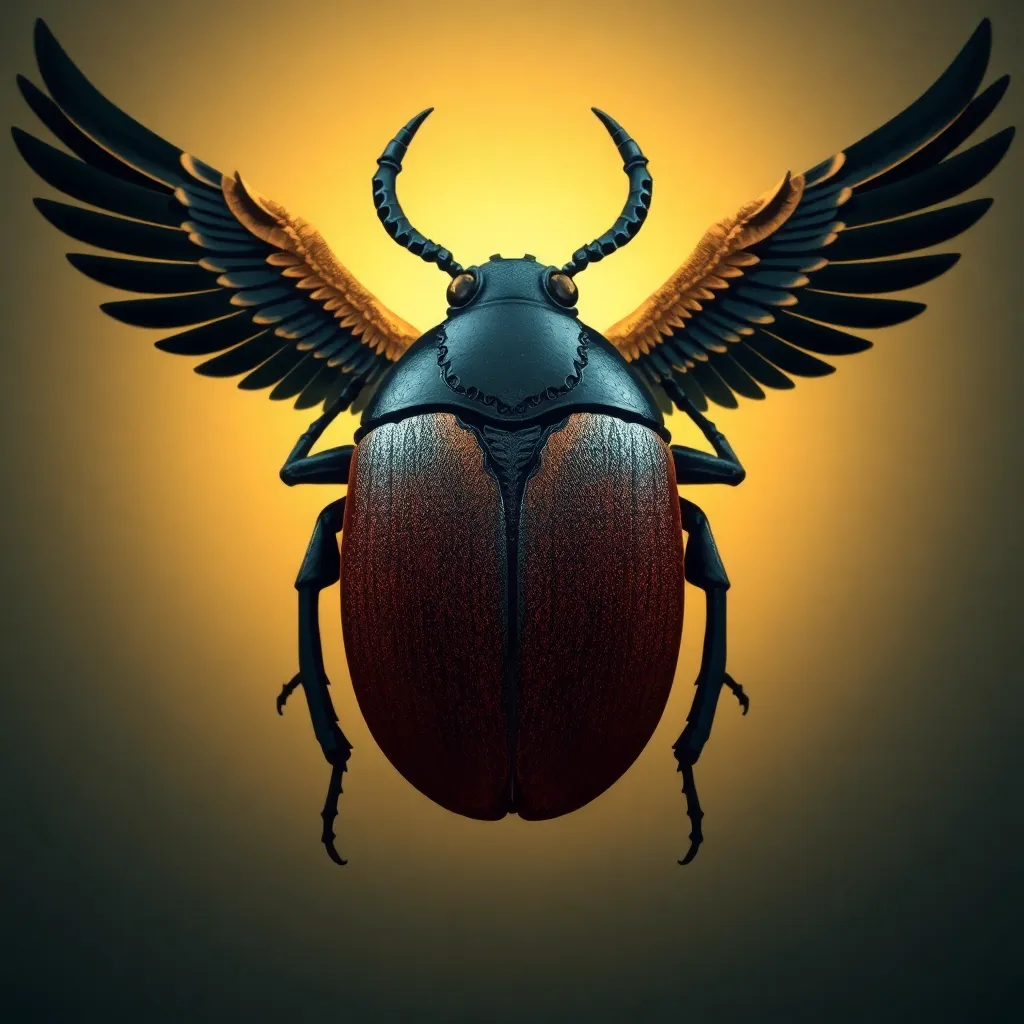The Symbolism of the Scarab in Modern Spirituality
I. Introduction to the Scarab
The scarab beetle, a small but mighty insect, has captured the imagination of cultures for centuries. In ancient civilizations, particularly in Egypt, the scarab was revered as a powerful symbol of life, death, and rebirth. As we transition into modern spirituality, the scarab’s significance has evolved, yet its core themes continue to resonate with those seeking deeper meaning in their lives.
II. Historical Context of the Scarab Symbol
A. Ancient Egyptian beliefs and the scarab’s role in mythology
In ancient Egypt, the scarab beetle was associated with the sun god Ra. The image of the scarab was often depicted rolling a ball of dung, which symbolized the sun moving across the sky. This act of rolling the dung ball was interpreted as a representation of the cycle of life, death, and renewal. The scarab was believed to protect the dead and was often included in burial practices, symbolizing the journey to the afterlife.
B. The scarab as a symbol of transformation and rebirth
The scarab’s life cycle further reinforced its symbolism of transformation. Emerging from a seemingly lifeless ball of dung, the scarab beetle undergoes a metamorphosis, serving as a powerful metaphor for personal growth and change. This association with rebirth made the scarab a potent symbol not just for the Egyptians, but for spiritual seekers today.
III. The Scarab in Modern Spiritual Practices
A. Use of the scarab in meditation and visualization
In modern spiritual practices, the scarab has found its way into meditation and visualization techniques. Practitioners often visualize the scarab as a representation of their intentions for growth and transformation. By focusing on the scarab during meditation, individuals can connect with the energies of renewal and empowerment.
B. Incorporation into rituals and spiritual ceremonies
Many spiritual ceremonies now incorporate the scarab as a symbol of protection and guidance. For example:
- Rituals for new beginnings often feature scarab imagery to invoke the energy of rebirth.
- Weddings and other significant life transitions may include scarab motifs to symbolize the couple’s journey together.
IV. The Scarab as a Representation of Personal Growth
A. Symbol of overcoming challenges and adversity
The scarab’s ability to thrive in harsh environments serves as a reminder that we, too, can overcome life’s challenges. This symbolism resonates deeply with those who are navigating personal struggles, encouraging them to persevere and emerge stronger.
B. Connection to self-discovery and inner strength
As individuals embark on their journeys of self-discovery, the scarab can represent the inner strength required to face one’s fears and insecurities. By embracing the scarab’s symbolism, individuals are inspired to tap into their resilience and embrace their true selves.
V. Scarab Symbolism in Popular Culture
A. Representation in art, literature, and media
The scarab has made numerous appearances in contemporary art, literature, and media, often as a symbol of mystery and power. It is frequently depicted in:
- Fantasy novels where it represents hidden knowledge or transformation.
- Movies that explore ancient myths and legends, showcasing its historical significance.
B. Influence on contemporary spiritual movements
As spiritual movements continue to evolve, the scarab has emerged as a significant symbol within various practices, including New Age spirituality. Its representation of transformation and protection resonates with those seeking deeper spiritual connections.
VI. The Scarab in Different Spiritual Traditions
A. Variations in symbolism across cultures and religions
While the scarab is most commonly associated with ancient Egyptian mythology, its symbolism can be found in various cultures around the world. For instance:
- In some Native American traditions, insects symbolize adaptability and survival.
- In Hinduism, the concept of reincarnation echoes the scarab’s life cycle themes.
B. Comparative analysis of the scarab’s meaning in various contexts
A comparative analysis reveals that, while the specific meanings may differ, the core themes of transformation, protection, and renewal are universally significant. This shared understanding highlights the scarab’s role as a symbol of hope across different spiritual traditions.
VII. Practical Applications of Scarab Symbolism
A. How to incorporate the scarab into daily spiritual practices
Incorporating the scarab into daily practices can enhance one’s spiritual journey. Here are some practical ways to do so:
- Wear scarab jewelry as a talisman for protection and guidance.
- Create a vision board that features images of the scarab to inspire transformation.
- Use scarab imagery during meditation to focus on personal growth.
B. Creating personal talismans or amulets featuring the scarab
Crafting personal talismans or amulets can be a powerful way to connect with the scarab’s symbolism. By choosing materials that resonate with you, such as stones or metals that represent strength and protection, you can create a unique piece that embodies your intentions.
VIII. Conclusion
A. Recap of the scarab’s enduring significance in modern spirituality
The scarab beetle remains a potent symbol in modern spirituality, representing transformation, protection, and personal growth. Its historical roots in ancient Egyptian mythology provide a rich tapestry of meaning that continues to inspire individuals today.
B. Encouragement to explore personal connections to the scarab symbol
As you explore the symbolism of the scarab, consider how it resonates with your own life experiences. Whether through meditation, rituals, or personal talismans, the scarab can serve as a powerful ally on your spiritual journey.




